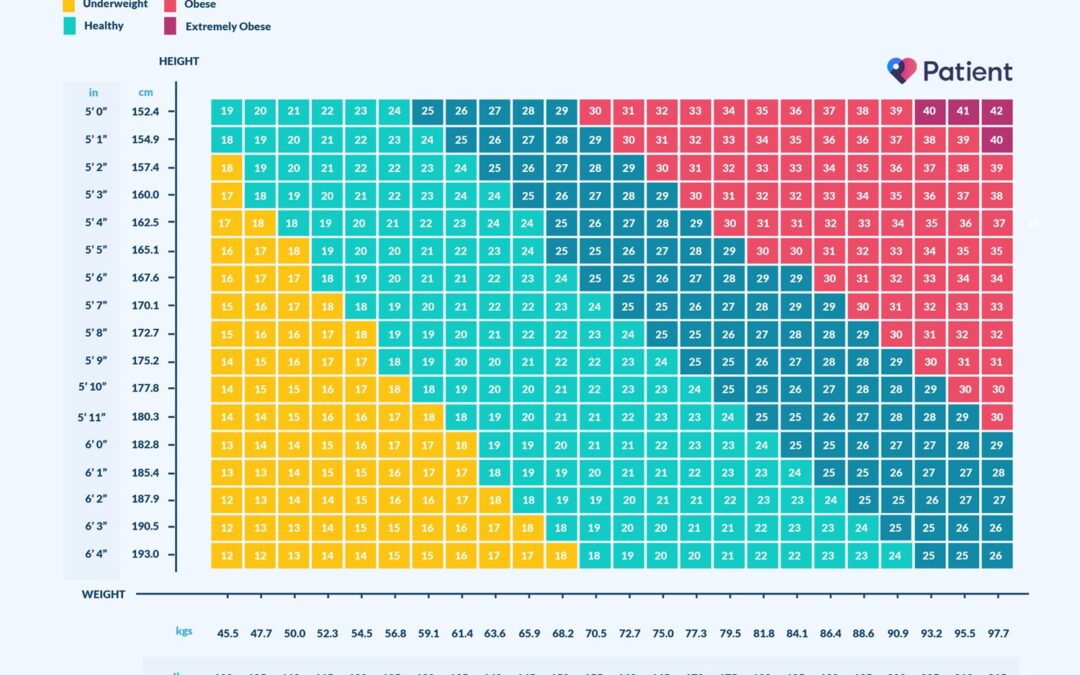Is Body Mass Index reliable?
Your BMI, or Body Mass Index, is a measure of your weight compared to your height. Accurate assessments of obesity are important, as being overweight or obese significantly increases your risk of a variety of medical conditions including type 2 diabetes, heart disease and cancer. As levels of overweight or obesity increase, the spotlight has fallen on BMI and its shortcomings as a measure of ideal weight for individuals, rather than whole populations of people where ‘averages’ apply.
“Some people naturally have a larger frame than others. But this causes quite a small variation in weight and is accounted for in the range of healthy BMI. There is really no such thing as someone who is big-boned.” Dr Jan Sambrook, How to lose weight in a healthy way
For most adults, BMI gives a good estimate of your weight-related health risks. If your BMI is over 35, your weight is definitely putting your health at risk, regardless of the factors below. However, there are some situations where BMI may underestimate or overestimate these risks in the 25-35 BMI range. The main ones are:
Children
Your GP or health visitor can advise on where your child sits on the ‘centile charts’ used to estimate healthy weights for children.
Pregnant women
Usual BMI estimates do not apply if you’re pregnant.
If you are very muscular
BMI assumes you have an average amount of body fat, including ‘intra-abdominal fat’ – fat deep inside your stomach cavity rather than under your skin. Intra-abdominal fat is much more closely linked to risks of type 2 diabetes and heart disease than fat under the skin.
If you are very muscular, your level of body fat may be lower than predicted by your BMI. However, this only applies to people who do high levels of exercise – much more than average.
If you are of Asian origin
People of Asian origin are prone to accumulating intra-abdominal fat (fat deep inside your stomach cavity rather than under your skin) at a lower BMI than people of Caucasian origin. People with this pattern of weight gain are described as ‘apples’ rather than ‘pears’ from their body outline. This means their health risks start to rise at a lower BMI, because intra-abdominal fat is directly linked to development of heart disease and type 2 diabetes.
The World Health Organisation has looked at the evidence and because of the variability between different Asian populations, it hasn’t officially changed the cut-off points. However, it does recommend that for public health purposes, some Asian groups should be considered overweight if their BMI is 22-25, and obese with a BMI of 26-31.
Older people (over 65, possibly over 60)
Because muscle mass tends to drop and body fat tends to rise in older people, BMI may not be an accurate reflector of body fat if you’re over 60.
Alternative estimates of weight-related health risks
If you feel BMI may not accurately reflect whether you are overweight or obese, measuring your abdominal circumference, waist-hip or waist-height ratio may give you a more realistic estimate.
Waist circumference
You measure your waist circumference half way between the bottom of your ribcage and the top of your hip bones, with the tape measure parallel to the floor. You must be breathing out when you measure.
